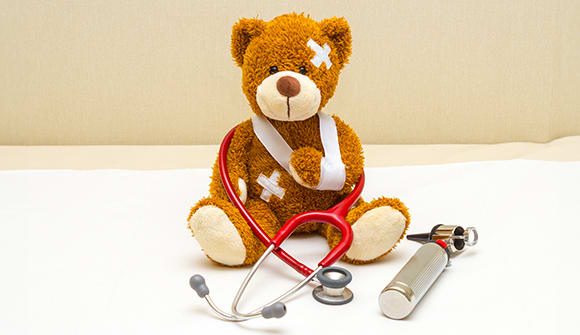More hope than ever before
Childhood cancer survival rates have leapt ahead, but there’s still work to be done.
Article Author: Vikki Mioduszewski
Article Date:

When Marissa Ierna’s mom told her what an oncologist was, that’s when the 17-year-old felt the shock—cancer isn’t something that’s supposed to happen to a kid.
It was two weeks before Ierna’s high school graduation. She was an athletic teenager who played soccer and lacrosse and ran half-marathons. She was looking forward to spending summer vacation with her friends, becoming a college student at the University of North Florida, and an independent life in her own dorm room.
A few months prior she had noticed a bug bite on her leg and a lump underneath that wouldn’t go away. Then, on a four-mile training run, her leg began to hurt. It must have been a reaction to the bug bite, she thought to herself. Her mother took her to the doctor’s office.
Instead, an aggressive soft-tissue tumor had wrapped itself around a muscle on her calf and spread to other parts of her body. She had stage 4 cancer. Within days, doctors were talking to her about surgery, chemotherapy and proton radiation therapy. Her chances for survival were pegged at 30 percent.
She remembers words from her doctor that gave her hope:
“Marissa is not a statistic. If you look at the statistics, then that’s what you’re going to get. But she is her own statistic,” said Eric Sandler, MD, pediatric hematologist/oncologist at Nemours Children’s Health.
Ierna beat the odds and has remained cancer-free for five years.
Thanks to major advances in childhood cancer treatment, there are even more kids who have hope these days. More than 80 percent of children with cancer now survive five years or more, according to the American Cancer Society. In the mid-1970s, the five-year survival rate was about 58 percent.
Clinical trials drive progress
The success is due to the large number of clinical trials that have become available to children, said Howard Katzenstein, MD, chief of Pediatric Hematology/Oncology at Nemours Children’s Health and for Wolfson Children’s Hospital.
“Pediatric represents 1 percent of all cancers, but 25 percent of all cancer patients treated on clinical trials,” Dr. Katzenstein said. “So, we learn things faster in kids. When a clinical trial is available, 85 percent of patients choose to go on it.”
Fifty years ago when a child was diagnosed with leukemia, it was virtually a death sentence. Now, 90 percent of children survive the disease.
That gives hope to families too. Childhood cancer creates a huge impact, not just on a patient, but on everyone close to the child.
Shared sacrifice
Cori Cook survived a rare aggressive cancer as an infant and barely remembers it. But the scars on her back and chest bear witness to the tubes inserted as part of her treatment and the surgery which removed her tumor.
Today, Cook is a nurse who works on the pediatric oncology floor at Wolfson Children’s Hospital. When she sees what families go through—like holding a child through a spinal tap—she is in awe of what her own parents faced.
She’s seen a mother who quit her job to spend eight months in the hospital while her child was treated. And a retired military man who relocated from Pensacola to Jacksonville so his sick grandchild’s mother could keep working; he calls it “Just another deployment.”
Cook favors anything that gives these families hope.
“The kids have gone through the wringer and come out on the other side,” she said. “It means the world to families to have these advancements in research.”
Unfinished business
The successes are very real, but there is still much work to do, said Dr. Katzenstein. Several types of cancers, including many brain tumors and most solid tumors that have spread, continue to have dismal survival rates.
And, for those cancers that now have high survival rates, research has shifted to reducing the long-term side effects of pediatric cancer treatment. A bone marrow transplant often leads to infertility, he said. Aggressive chemotherapy treatments attack healthy tissue along with cancer cells, and may cause permanent damage.
It will be clinical trials once again that will shape progress, Dr. Katzenstein said. Only one-third of the cost of clinical trials today is financed by the government. The balance depends on philanthropy.
It’s what keeps hope alive for so many who are fighting a disease that no child should have to face.
To learn more about cancer care at Wolfson Children’s Hospital, visit wolfsonchildrens.com. To make a donation to benefit childhood cancer research and care, visit HopeStartsHere.com.



